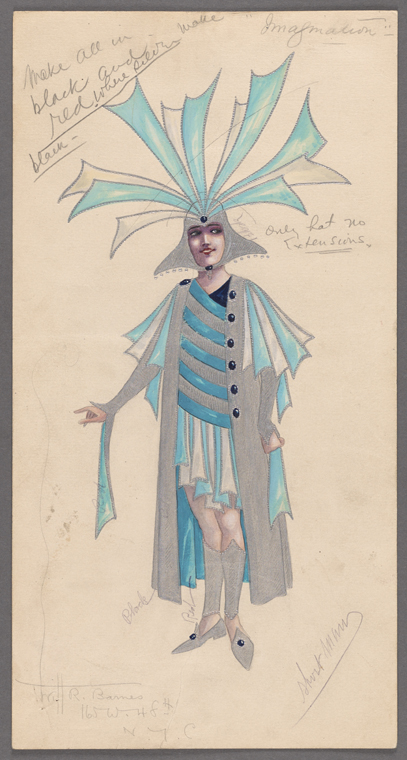The Spectacular World of R.H. Burnside

A note from Curator Doug Reside: Last summer I received an email from Professor Arianne Quinn in which she proposed a long-distance archival project in which her students at Florida State University would use the Library's online resources to research relatively unknown musicals in our collections. It seemed to me a really innovative, but potentially challenging project. The Billy Rose Theatre Division has a wealth of resources in our Digital Collections, but they represent only a tiny fraction of our total holdings, so I was interested to see whether a research project using only our digital holdings would be possible. However, Quinn and her students strategically selected works that are very well documented in our digital holdings, and the result is impressive. I hope you enjoy reading what these emerging scholars discovered about these relatively unknown musicals as much as I did.
A guest blog by Dr. Arianne Johnson Quinn and guest student scholars in the Florida State University Honors Experience Program:
This blog was crafted by a group of seven undergraduate students at Florida State University
who have been enrolled in my Honors Program Musical Theatre course entitled “Staging Identity and Difference in the American Musical.” Each of the students was assigned a small section of original research, using the vast digital collections of the NYPL for the Performing Arts, under the guidance of Doug Reside, Curator of the Billy Rose Theatre Division.
The goals for this project were simple: to support undergraduate student research and allow them to develop the necessary skills to perform independent original research on musical theatre using digital archival sources, and to work collaboratively as they begin taking steps towards publication and further research. This was a joyful, creative process as students from vastly different academic majors discovered unknown works of musical theatre and began to construct historical narratives.
This blog centers on the creation of two of impresario R. H. Burnside’s works from 100 years ago that have been forgotten, the spectacle production Good Times (1920) and the colorful extravaganza Tip Top (1920). We are grateful to Doug Reside for his commitment to education, research, and skillful guidance. We are also grateful to the New York Library for the Performing Arts for making this research project possible.
Below are links to PDFs of the students' work, click through each one to read.
- Theatre and History student Callista Payne explores the technical elements of Burnside's shows.
- Psychology major Lindsay Bolton explores the relationship between character development and Burnside’s artistic background.
- Nursing major Callie Albrigo analyzes public response to Burnside and his career.
- The lyric and dramatic oddity of Tip Top is carefully reproduced and explored by Religion major Emily McGinn.
- Commercial Entrepreneurship major Max Frankel examines the reception history ofBurnside’s work in comparison with his contemporary Florenz Ziegfeld.
- Psychology major Samantha Smith explores the use of stock character tropes in Burnside’s work and the ways in which these marked his distinctive ‘brand.”
- Xinyi Xu, an Interior Architecture and Design major, provides both a recreation of the lost libretto for Good Times, using a newspaper article from the period, and describes the costume styles that brought each of these scenes to life.
- Music Performance major Abbie Whitehurst describes three of the most popular numbers from both of these shows, and reveals the important practice of sheet music in musical theatre consumption for the American public.
As we see in each of these sections, the myriad of archival elements and analysis in these contributions has much to tell us about the shape of musical theatre in 1920s America, and its lasting impact on the form today.
Read E-Books with SimplyE
 With your library card, it's easier than ever to choose from more than 300,000 e-books on SimplyE, The New York Public Library's free e-reader app. Gain access to digital resources for all ages, including e-books, audiobooks, databases, and more.
With your library card, it's easier than ever to choose from more than 300,000 e-books on SimplyE, The New York Public Library's free e-reader app. Gain access to digital resources for all ages, including e-books, audiobooks, databases, and more.
If you don’t have an NYPL library card, New York State residents can apply for a digital card online or through SimplyE (available on the App Store or Google Play).
Need more help? Read our guide to using SimplyE.